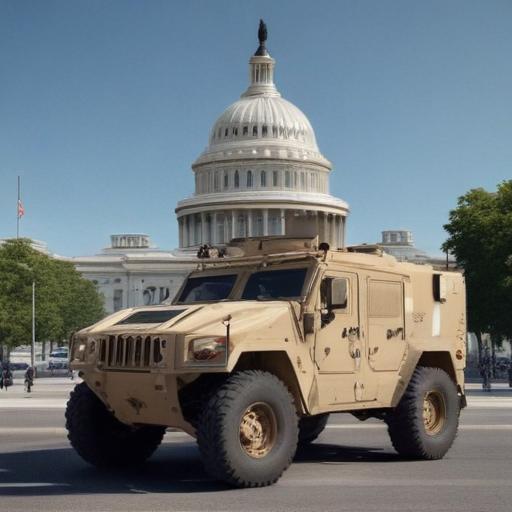National Guard troops have started to appear on the streets of Washington, DC, as President Donald Trump moves to tighten federal presence in the capital amid a political clash over crime and local autonomy. Officials say about 800 National Guard troops are expected to be deployed, alongside 500 federal law enforcement agents. Mayor Muriel Bowser, a Democrat, has rejected the claim that crime is out of control and described the deployment as an “authoritarian push.”
Trump has signaled similar actions could target New York and Chicago, two other Democratic-led cities, arguing that crime is rising there as well. By contrast, crime statistics in Washington tell a more mixed story. The city’s Metropolitan Police Department (MPD) data show violent offenses fell after a peak in 2023, and 2024 registered the lowest level in three decades. Preliminary 2025 data indicate violent crime continuing to decline, with overall violent crime down about 26% this year versus the same point in 2024 and robberies down about 28%.
Troops have been seen moving into the capital since Trump’s Monday announcement, erecting barricades around government buildings and posing for photos with tourists. Federal authorities reported 23 arrests on Monday night, in a range of cases from homicide and gun offenses to drug dealing and other crimes. White House spokesperson Karoline Leavitt said the arrests were just the beginning and that the administration would pursue violent offenders “over the course of the next month.” FBI Director Kash Patel later said FBI agents were involved in roughly half of those arrests.
Bowser and MPD leadership have said they share the goal of reducing crime but have framed the federal surge as an encroachment on city autonomy. Bowser, after meeting with US Attorney General Pam Bondi, emphasized focusing on how to make the influx of federal officers effective while protecting local control. Police Chief Pamela Smith echoed the aim of removing illegal firearms from streets and noted that the enhanced presence could strengthen public safety.
The deployment coincides with a dangerous incident in Logan Circle, a short distance from the White House, where a shooting on Monday night left one man dead. A manhunt is underway, and the Secret Service has heightened security around the president. The case marks the year’s 100th homicide in DC, according to local outlets, underscoring the violence that persists in pockets of the city even as overall trends improve.
There is pushback from DC’s police union, with chairman Gregg Pemberton accusing the department of “deliberately falsifying crime data” to paint a rosier picture than reality. FBI data show a modest overall decrease in crime in DC last year, including a 9% drop, even as the homicide rate in the capital remains higher than the national average when compared with other major cities.
What this means for residents and visitors is a moment of heightened security, mixed signals on crime trends, and a test of how federal and local agencies can coordinate. Supporters say the combined resources could deter violent crime and reassure the public, while critics warn that a federal heavy-handed approach could strain local governance and civil liberties. The coming weeks will reveal how the balance between federal action and local autonomy plays out in the city’s streets and its politics.
Summary: Washington, DC, is witnessing a rare federal surge with National Guard troops and FBI and other agents in place while Mayor Bowser resists the notion that crime is out of control. Crime data show declines in overall violent crime and robberies, but certain incidents and political tensions persist. The situation raises questions about governance, safety, and the most effective path to reducing violence in the nation’s capital.
Additional value notes:
– If you’re covering this story, consider including perspectives from community leaders, small business owners near affected areas, and residents who can speak to daily life during the surge.
– A brief explainer on how federal surges interact with local policing authority could help readers understand the governance dynamic at play.
– A short data box comparing DC crime trends year-by-year could provide helpful context for readers who want to see the numbers behind the headlines.
– Positive framing angle: emphasize ongoing collaboration between federal and local agencies aimed at reducing gun violence and restoring public confidence, while acknowledging residents’ concerns about autonomy and civil liberties.
